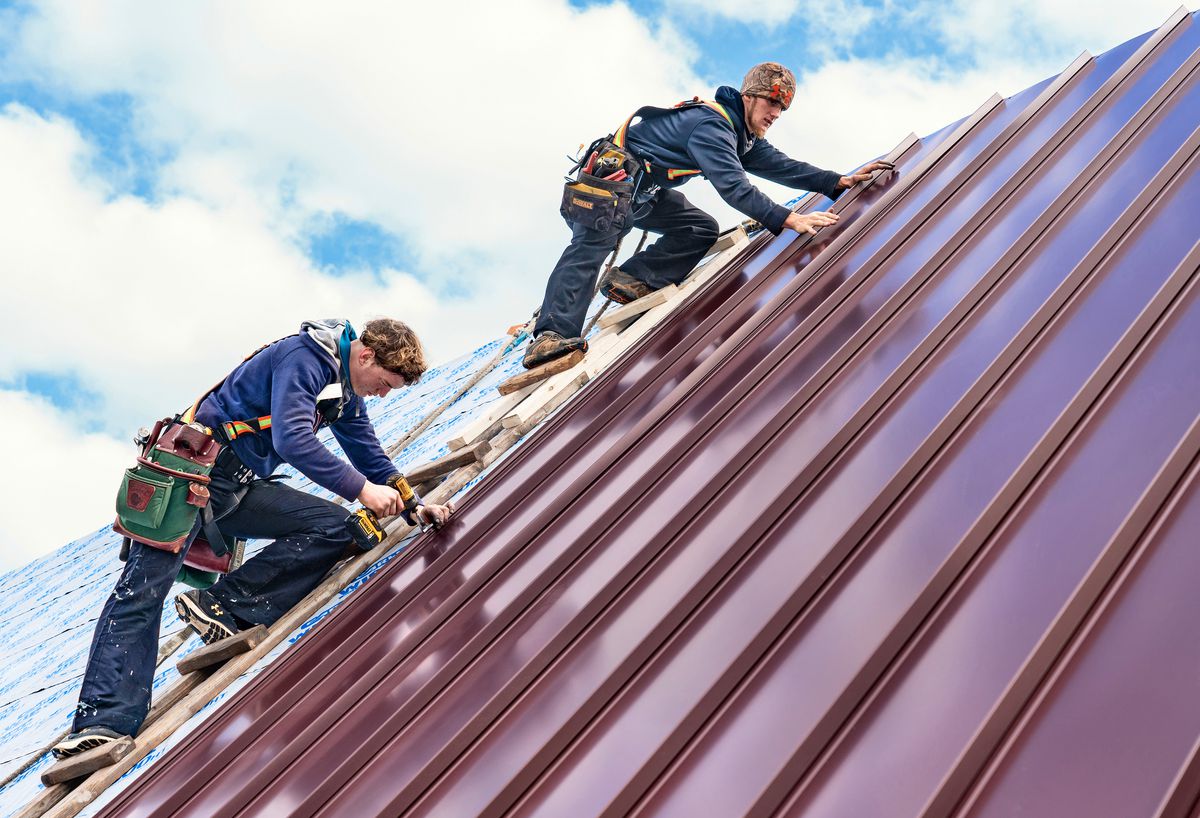Understanding the Unique Benefits of Copper Roofing
The Timeless Appeal of Copper: Aesthetic and Functional Perks
Copper roofing exudes a unique aesthetic that is both classic and modern, making it a coveted choice for homeowners seeking character and charm. Its warm, natural hue enhances the architectural appeal of any home, creating an inviting atmosphere that draws the eye. As copper ages, it develops a stunning patina, transitioning from a bright metallic finish to a rich teal or green, which not only serves as a distinctive visual element but also contributes to the character of your home over time. This evolving color spectrum is unlike any other roofing material, offering an attractive aesthetic that sets your home apart from others in the neighborhood.
Furthermore, copper roofing isn’t just about looks; it offers functional advantages that complement its beauty. For instance, copper has high thermal conductivity which can lead to lower energy costs. This material reflects the sun’s rays, keeping your home cooler in hot climates while retaining warmth during the winter months. Such characteristics make copper not only a fashionable choice but a smart one, accentuating the dual benefits of aesthetics and functionality.
Longevity and Durability: Why Copper Stands the Test of Time
When considering roofing options, longevity is one of the most critical factors. Copper roofing is renowned for its remarkable lifespan, often enduring upwards of 100 years with minimal maintenance. Unlike other roofing materials that may require periodic replacement or repairs, copper, when properly installed, establishes a robust shield against the elements, including rain, snow, and even hail. This durability not only ensures a long-lasting roof but also provides peace of mind when it comes to protecting your home from water damage or leaks which can lead to costly repairs and renovations down the line.
The resistance of copper to corrosion is another significant advantage, particularly in coastal areas where salt air can accelerate the deterioration of other materials. While other roofing types may succumb to rust or mold over time, copper resists these elements, thereby maintaining its integrity and appearance for decades. Investing in copper roofing is essentially investing in a home that will stand the test of time, adding value to your property and saving you money on future repairs.
Eco-Friendly Choices: The Sustainability of Copper Materials
In today’s environment-conscious society, sustainability has become a pivotal factor in material selection for home construction and renovation. Copper stands out as an eco-friendly option, primarily because it is a recyclable material. In fact, copper can be recycled repeatedly without losing its intrinsic properties or quality. The life cycle of copper allows it to be repurposed in various applications, from electrical wiring to plumbing systems, minimizing waste and reducing the demand for new materials. This characteristic makes it an ideal choice for eco-conscious homeowners wishing to make a positive environmental impact.
Additionally, the manufacturing process of copper roofing requires less energy compared to other roofing materials, further enhancing its status as a sustainable option. By choosing copper, homeowners are often motivated by both aesthetic desires and environmental responsibility, knowing they are selecting a product that is both beautiful and kind to the planet. As more homeowners become aware of ecological issues, the appeal of copper roofing only continues to grow.
Navigating the Search: Finding Qualified Copper Roof Installers
Key Qualities to Look for in a Roofing Professional
Choosing the right copper roof installer is crucial for ensuring the longevity and effectiveness of your investment. Quality workmanship can significantly affect the performance of your copper roofing over time. When searching for roofing professionals, it’s essential to look for qualifications such as licensing and insurance, as these demonstrate compliance with local regulations. A reputable installer should possess a valid contractor’s license and carry liability and workers’ compensation insurance to protect both themselves and their clients against unforeseen mishaps or accidents during the installation process.
Experience specifically with copper roofing is another critical aspect. Copper installation requires specialized techniques that differ from other roofing materials. The installer should have a strong portfolio showcasing previous copper roofing projects. Additionally, assess their understanding of thermal expansion and contraction, as this knowledge is pivotal for ensuring the roof maintains its integrity through various weather conditions. A qualified roofer will also be familiar with local building codes and regulations regarding copper roofs.
Leveraging Online Resources: Reviews, Ratings, and Recommendations
In the digital age, finding qualified contractors has become more accessible than ever through online resources. Websites that aggregate reviews and ratings, such as Yelp and HomeAdvisor, can provide invaluable insight into the experiences of previous clients with specific contractors. These platforms allow you to see not only the ratings but also detailed feedback, highlighting strengths and potential challenges that other homeowners have faced. Additionally, consider requesting recommendations from friends or family members who have undergone home renovations recently. A personal endorsement carries a lot of weight and often leads you to reliable and trustworthy professionals.
Social media platforms can also serve as tools for research. Many contractors use platforms like Facebook or Instagram to showcase their work, allowing you to view additional photos and perhaps even customer interaction regarding their services. Engaging with previous customers online or in person can also provide further clarity on the contractor’s reliability and workmanship. The more research you conduct, the better equipped you will be to select a suitable installer for your copper roofing project.
Interviewing Installers: Essential Questions to Ask
Once you have shortlisted a few potential copper roof installers, the next step is to conduct interviews to gauge their experience, service approach, and suitability for your project. Start with fundamental questions such as how long they have been in the roofing business, specifically focusing on copper roofing. Ask for references from past projects, as these can provide insight into their professional history and relationships with clients.
Inquire about their installation procedures and techniques to understand the steps they take to ensure a high-quality installation. It is crucial to discuss warranties and services they provide post-installation; for instance, a reliable contractor should offer a warranty on both materials and labor. You might also want to know what kind of maintenance plan they recommend to keep your copper roof in excellent condition over time. By asking these questions, you are not just assessing the contractors’ skills, but also their commitment to customer satisfaction and long-term reliability.
Evaluating Quotes: Cost vs. Quality in Copper Roofing Installation
Breaking Down the Cost: What Influences the Price of Copper Roofing?
Understanding the costs associated with copper roofing installation is crucial for budgeting your renovation project. Several factors contribute to the overall price, including the quality of materials, the complexity of the roof design, and labor costs. Copper itself can be a significant portion of the expense; the price of copper fluctuates based on market conditions, so it’s vital to stay informed of current copper prices. Different grades of copper are available, and the thickness of the material you select will also impact the cost. Thicker copper sheets might be more expensive but can also extend the life expectancy and performance of your roof significantly.
Additionally, the complexity of your roof’s design plays an essential role in the overall installation costs. A roof with many angles, dormers, or other architectural features may require more specialized skills and, thus, higher labor costs compared to a straightforward, flat design. Furthermore, geographic location can affect pricing; labor rates and material costs can vary significantly between urban and rural areas. Consequently, it is important to gather estimates from multiple contractors to ensure you have a comprehensive understanding of what a fair price for copper roofing looks like in your area.
Red Flags in Estimates: Signs of Potential Troubles Ahead
When reviewing quotes from potential roofing contractors, there are certain red flags to watch for that can indicate potential issues in quality, reliability, or transparency. One of the most dangerous signs is if a quote is significantly lower than others you have received; while everyone appreciates a good deal, a drastically lower price can signal that a contractor may be cutting corners, using inferior materials, or lacking necessary expertise. Be wary of quotes that lack detailed breakdowns of costs as well; a comprehensive estimate should clearly delineate materials, labor, and any additional fees, providing transparency that is critical to understanding your investment.
Another important factor is the presence of hidden fees or unclear terms within the contract. Pay attention to specifics; if a contractor does not clearly outline the terms of their warranty or what happens in case of unexpected complications, it may indicate hastiness or a lack of professionalism. A reputable contractor will be open and forthright about payment schedules, project timelines, and the conditions under which the contract could change. Additionally, resistance to questions or avoidance of discussing project specifics can indicate poor customer service or a lack of experience, both of which can adversely impact your roofing project.
Investing Wisely: How to Balance Affordability and Quality
Finding the right balance between affordability and quality in your copper roofing project is essential. While it can be tempting to opt for the lowest bid to save money, this approach can often come back to haunt you in the long run, particularly with a significant investment like roofing where quality materials and expert craftsmanship play critical roles. Consider setting a budget that accommodates a middle ground, allowing for quality materials and skilled labor while still being mindful of your overall financial plan.
Investing in a reputable contractor who has a proven track record with copper roofing may come at a premium initially, but it can pay off through fewer maintenance issues and a longer-lasting roof. Look at the overall value rather than solely the cost; focus on the warranty provided, the quality of materials, and the professionalism exhibited throughout the process. In the end, making informed decisions that prioritize high-quality workmanship and materials can lead to greater satisfaction and peace of mind concerning your roofing investment.
Post-Installation Care: Maintaining the Beauty and Integrity of Your Copper Roof
Routine Maintenance Tips to Ensure Longevity
Once your copper roof has been installed, regular maintenance is key to ensuring its longevity and maintaining its aesthetic appeal. Fortunately, copper’s natural properties mean that it requires relatively low maintenance compared to other roofing materials. Regular inspections are essential, particularly in the first few years after installation when the roof might react to weather changes. Check for any debris that might accumulate in the valleys or gutters and remove it to prevent potential drainage issues which could lead to corrosion or water damage.
Cleaning is also essential, as it maintains the roof’s beauty and protects it from stains or streaks caused by accumulated dirt or other contaminants. However, it is important to use gentle methods such as a soft-bristle brush and mild soap, as aggressive scrubbing or harsh chemicals can damage the protective patina of the copper. Ensuring proper drainage is another crucial aspect; veraciously check gutters and downspouts for clogs and ensure that water can flow freely off the roof. By adhering to these simple maintenance tips, you can preserve the beauty and longevity of your copper roof for decades to come.
Common Myths vs. Facts: Debunking Misconceptions about Copper Care
When it comes to copper roofing, misinformation can lead to misunderstandings about care practices and longevity. A common myth is that copper roofs require extensive maintenance. However, this is not true; while all roofing systems need some maintenance, copper roofs are among the least demanding in this regard. They do not need to be painted or sealed, and their natural corrosion resistance significantly reduces the need for upkeep.
Another misconception is that copper roofs will turn green uniformly over time, and this is seen as a negative trait. In reality, the patina that develops on copper roofs is not only a protective layer that prevents corrosion but also enhances the character and charm of the roof. Many homeowners appreciate the evolving color and choose copper specifically for its ability to age beautifully. Understanding these facts empowers homeowners to make informed decisions about the care and maintenance of their copper roofing systems, ultimately leading to greater satisfaction and investment value.
Signs It’s Time for Professional Inspection: Keeping Your Roof in Top Shape
Even with low-maintenance materials like copper, proactive inspections are key to catching potential issues before they escalate. It’s recommended to have a professional inspection conducted every few years, but certain signs can indicate that an immediate assessment is necessary. If you notice any discolorations, unusual buildup, or excessive debris, these may signal underlying issues with drainage or corrosion that need to be addressed. Similarly, if your roof becomes prone to leaks or water pooling, calling in a professional inspector can help diagnose the problem and resolve it swiftly.
Changes in the appearance of joints or seams, which may pull apart, should also prompt immediate attention to prevent water infiltration. Additionally, if you see unusual stains or your interior experiences signs of water damage, it is critical to have a professional inspect the roof and any related systems such as gutters. By remaining vigilant and addressing any concerning signs promptly, you can maintain the integrity and beauty of your copper roof for years to come.




